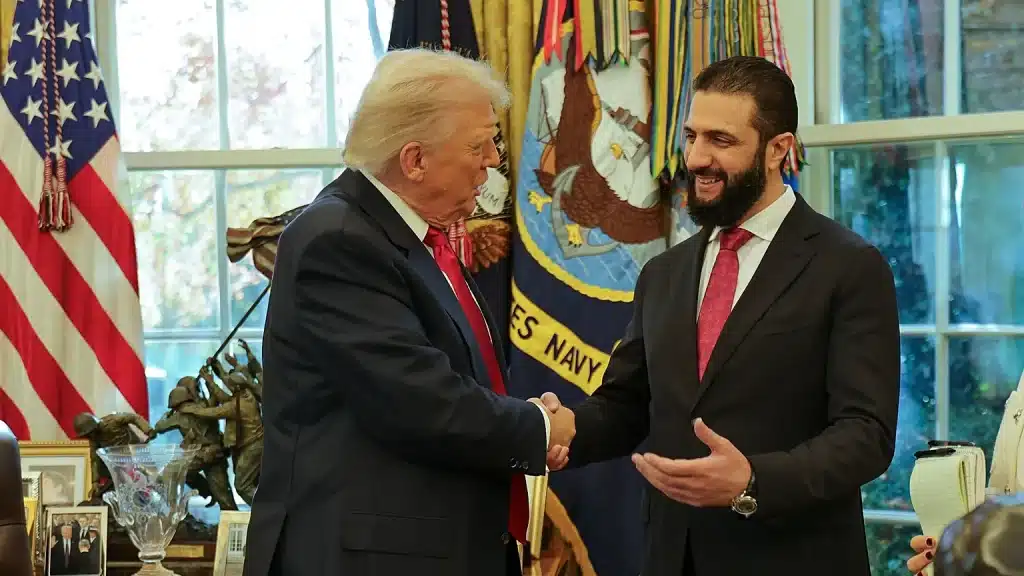Was Ahmed Al-Shara’s trip to America considered a success?
Before his trip to the United States, reports indicated a readiness for military cooperation between the parties. This included Syria’s potential membership in the anti-ISIS coalition, Ahmed al-Shara’s agreement to a peace deal with Israel, and Syria’s willingness to join the Abraham Accords. Some reports even suggested that Syria might join the agreement before Saudi Arabia, although that did not occur.
Ceremonial matters also appeared to be problematic. Ahmed al-Shara did not enter the White House through the special guest door, which meant that Trump did not welcome him next to the vehicle as he did with other leaders. Additionally, the arrangement of the table and chairs for negotiations, which is typical in the Oval Office, raised questions, as did the absence of a joint press interview at the negotiations’ conclusion. The lack of journalists and the American side’s decision not to broadcast images from inside the meetings indicated a high level of conservatism regarding this trip.
This analysis will explore two key issues: First, why did the American side display such conservatism in ceremonial matters? Second, did the Syrian and American sides achieve their anticipated goals during these negotiations?
It is possible that because Ahmed al-Shara was previously a member of al-Qaeda and a leader within that terrorist organization, the Americans deemed it inappropriate to extend the same level of official welcome as offered to other leaders. Although Trump had met with al-Shara twice outside the White House, he recognized that publicizing this meeting too widely might create opportunities for negative propaganda against him within the United States. Given that al-Qaeda was responsible for the deaths of over three thousand Americans in the September 11 attacks and for various assaults on American military and economic centers, Trump likely thought it prudent to allow Ahmed al-Shara to prove himself further within the Syrian government, particularly since Syria is now largely fragmented. Currently, a substantial area is under government control, another segment is held by the Druze, parts of the north and east are controlled by the Kurds, and some areas are occupied by Israel following Assad’s decline.
Donald Trump praised Ahmed al-Shara, stating that with Syria’s assistance, peace could be achieved in the Middle East and that progress had already been made in this regard. However, Trump did not mention the potential agreement for Syria to join the anti-ISIS coalition or the establishment of a U.S. base near Damascus. This omission could indicate that either an agreement was reached that both sides preferred to keep confidential, or that the Americans, already having established bases in Kurdish areas, were still deliberating on the matter. Additionally, considering Israel’s proximity—about 20 kilometers from Damascus—the United States might be waiting to assess the situation regarding Israel’s presence in Syria before deciding on the establishment of a larger base.
Some reports claim that Donald Trump urged Ahmed al-Shara to remove jihadist commanders, whom the U.S. considers terrorists, from military positions outside Syria. Al-Shara reportedly responded affirmatively to this request. Such an action could lead to a coup.

